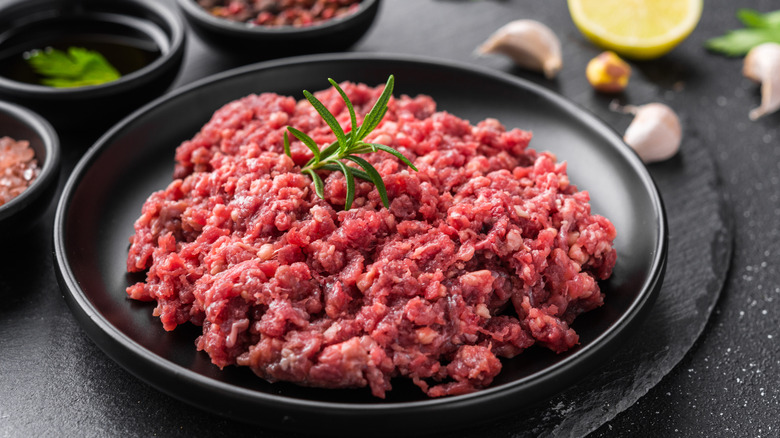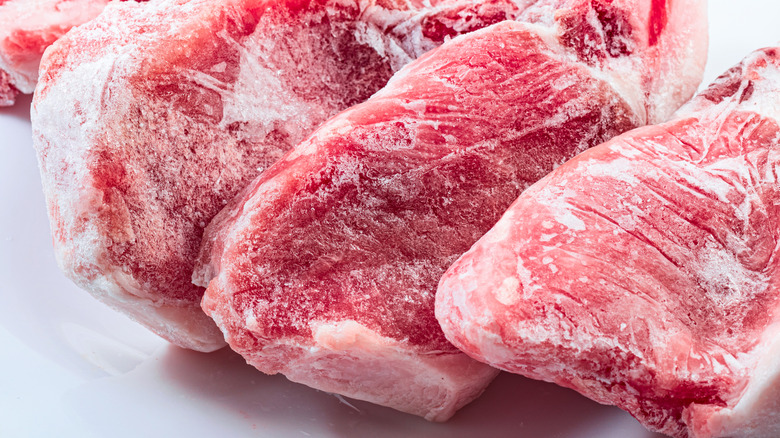Why Hand Mincing Meat Is Better Than Buying Ground Meat
Most people may use the terms "minced meat" and "ground meat" interchangeably when talking about finely cut meat. However, there is a distinction between the two. According to Home Cook World, ground meat is emulsified and contains fat as well, whereas minced meat exclusively comprises finely chopped skeletal meat, excluding any internal organs. Ground meat bought from a store can contain a blend of animals and fillers like water, preservatives, and even coloring to make it more aesthetically appealing to consumers. One single burger patty can even be made up of a staggering 2.3 cow herds (via USDA's Economic Research Service).
Another argument for using minced meat instead of ground meat is that the minced meat texture is leaner and crumblier, which makes it more ideal for chilis, fillings for dumplings or patties, stuffing, and stews. If you're making burgers or meatballs, the paste-like nature of ground meat may be better for holding the shape of a patty or ball.
How to mince meat by hand
Per The Woks of Life, in Asian cooking, older generations have always hand-chopped meat for their cuisine, most notably for dumplings. And while you can use a food processor to ground your meat to avoid any preservatives or filler, YouTuber Made With Lau contends that "hand-chopped meat tastes so much better" than store-bought ground meat, and the extra time and elbow grease it takes is well worth it. Step one to hand mincing your meat: make sure that you have a really good knife and a freezer.
"The key is to partially freeze the meat," he explains. With a piece of semi-frozen chicken, for example, the key is to slice the meat into thin slices, then into thin strips, and then rotate the strips to mince them into even, tiny pieces. Ready to put your meat mincing skills to the test? Try out this Thai-inspired stir-fried minced beef recipe.

